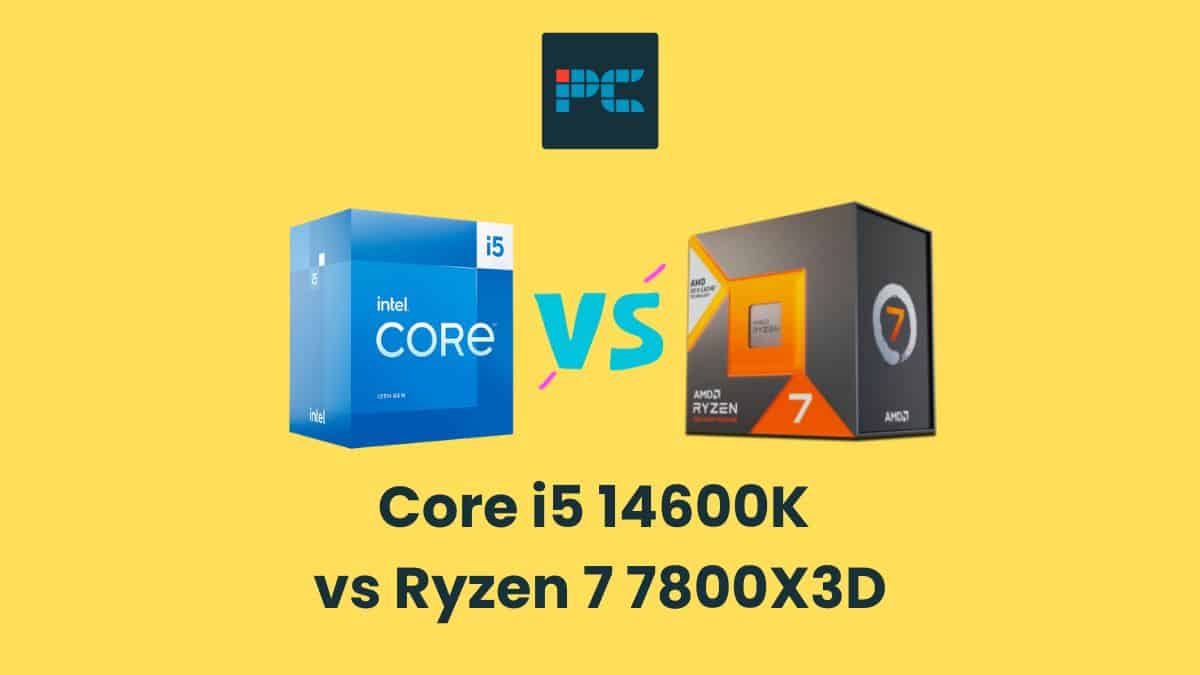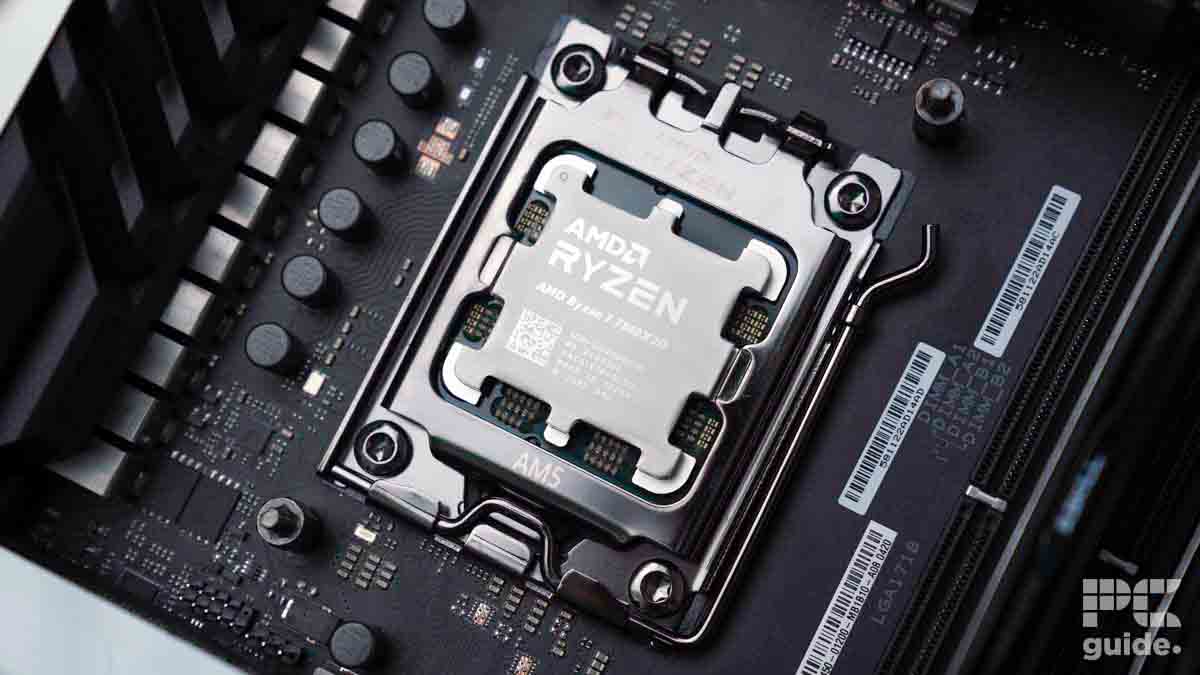Core i5 14600K vs Ryzen 7 7800X3D – a one-horse race?

Table of Contents
Intel’s Core i5-14600K has entered the arena to challenge AMD’s gaming powerhouse, the Ryzen 7 7800X3D. While AMD’s processor has gained acclaim as one of the top choices for gaming, leveraging the potency of AMD's 3D V-Cache for seamless gaming experiences, questions have been raised regarding its productivity performance. On the flip side, Intel is renowned for crafting chips that excel in various tasks. So, here’s our rundown on the Core i5 14600K vs Ryzen 7 7800X3D.
Core i5 14600K vs Ryzen 7 7800X3D: specs comparison
The Intel Core i5 14600K features 6 Raptor Cove performance and 8 Gracemont efficiency cores, providing 20 threads. In comparison, AMD’s Ryzen 7 7800X3D boasts 8 performance cores without separate efficiency cores and 16 threads.
Prime Day may have closed its doors, but that hasn't stopped great deals from landing on the web's biggest online retailer. Here are all the best last chance savings from this year's Prime event.
- Sapphire 11348-03-20G Pulse AMD Radeon™ RX 9070 XT Was $779 Now $719
- AMD Ryzen 7 7800X3D 8-Core, 16-Thread Desktop Processor Was $449 Now $341
- Skytech King 95 Gaming PC Desktop, Ryzen 7 9800X3D 4.7 GHz Was $2,899 Now $2,599
- LG 77-Inch Class OLED evo AI 4K C5 Series Smart TV Was $3,696 Now $2,996
- AOC Laptop Computer 16GB RAM 512GB SSD Was $360.99 Now $306.84
- Lexar 2TB NM1090 w/HeatSink SSD PCIe Gen5x4 NVMe M.2 Was $281.97 Now $214.98
- Apple Watch Series 10 GPS + Cellular 42mm case Smartwatch Was $499.99 Now $379.99
- AMD Ryzen 9 5950X 16-core, 32-thread unlocked desktop processor Was $3199.99 Now $279.99
- Garmin vívoactive 5, Health and Fitness GPS Smartwatch Was $299.99 Now $190
*Prices and savings subject to change. Click through to get the current prices.
Manufactured using a 10nm process, the Core i5 14600K balances power efficiency and performance. On the other hand, the Ryzen 7 7800X3D utilizes a more advanced 5nm process, potentially contributing to improved power efficiency and overall performance.
Both processors support ECC memory, a crucial feature for error correction in certain professional and enterprise applications. Additionally, they offer compatibility with both DDR4 and DDR5 memory, allowing users flexibility in choosing the type of memory that suits their needs.
| Specifications | Core i5 14600K | Ryzen 7 7800X3D |
|---|---|---|
| Performance Cores | 6 x Raptor Cove | 8 |
| Efficiency Cores | 8 x Gracemont | NA |
| Threads | 20 | 16 |
| Processor Size | 10 nm | 5 nm |
| ECC Support | Yes | Yes |
| DDR4 and DDR5 Support | Yes | Yes |
| P-Core Base Clock | 3.50GHz | 4.2 GHz |
| P-Core Boost Clock | 5.30GHz | 5.0 GHz |
| E-Core Base Clock | 2.60GHz | NA |
| E-Core Boost Clock | 4.00GHz | NA |
| TDP | 125 W | 120 W |
| Socket | LGA 1700 | AM5 |
| L3 Cache Memory | 24 MB (shared) | 96 MB (shared) |
| Shading Units | 256 | 448 |
| Price | $319 | $449 |
In terms of clock speeds, the Core i5 14600K has a P-Core base clock of 3.50GHz and a boost clock of 5.30GHz, providing impressive single-core performance. Its E-Core base clock is 2.60GHz, with a boost clock of 4.00GHz. In contrast, the Ryzen 7 7800X3D features a P-Core base clock of 4.2 GHz and a boost clock of 5.0 GHz, a considerable upgrade from its predecessor CPUs. Notably, the Ryzen processor does not have separate efficiency cores, as seen in the Core i5.
Both CPUs have reasonable thermal design power (TDP) ratings. The Core i5 14600K has a TDP of 125W, whereas that of the Ryzen 7 7800X3D is 120W, indicating a balance between performance and power consumption.
The processors differ in their socket designs, with the Intel CPU utilizing the LGA 1700 socket, while the Ryzen 7 7800X3D employs the AM5 socket.
Cache memory is a crucial aspect of processor performance, and here, the Ryzen 7 7800X3D stands out with a substantial 96MB of shared L3 cache, compared to the 24MB on the Core i5 14600K. Both have built in GPUs, but will benefit from being paired with a good graphics card to bring out best performance.
Core i5 14600K vs Ryzen 7 7800X3D: performance
In the realm of performance, benchmark tests provide a comprehensive overview of the hardware. The PassMark CPU benchmarks for single-core, performance place the Core i5 14600K at 4301, surpassing the Ryzen 7 7800X3D’s score of 3758. In the multi-core category, the Intel processor continues to lead with a score of 39796, reflecting a 15% advantage over the Ryzen 7 7800X3D, which scores 34512. This means it might be better for tasks like video editing and more complex content creation, rather than single-thread tasks like gaming.
These results underscore the Core i5 14600K’s prowess in multi-core scenarios, solidifying its position as a high-performing contender. However, the ultimate choice between these processors hinges on specific usage requirements, as individual preferences and workload demands may influence the decision-making process.
Core i5 14600K vs Ryzen 7 7800X3D: price and value
In terms of pricing, the Core i5 14600K comes in at $319, while the high-end Ryzen 7 7800X3D is priced slightly higher at $449. Considering the performance metrics and the price differential, it’s clear that the Core i5 14600K offers better value for money.
Final verdict
The Core i5 14600K is a compelling choice for users seeking a balance between performance and affordability. While the Ryzen 7 7800X3D offers competitive features which optimize gaming performance, the higher price tag may deter budget-conscious consumers. Ultimately, there’s no clear winner – the final decision depends on individual preferences, specific use cases, and budget constraints. Whether you prioritize raw processing power or cost-effectiveness, both processors deliver impressive performance within their respective price ranges.



